
20 13 24 32 The Tech-Driven Transformation Of HR - Sam Chen, Fetti What’s Ahead In HR Tech? - Jared Pope, Work Shield Why Data Must Anchor People Operations - Ian White, ChartHop JUNE 2023 • Vol. 11 • No.06 (ISSN 2564-1956) Themed Edition on HR Tech: What’s New and What’s Ahead The Future Of HR In Organizational Success Exclusive interview with Anna Lyons, CHRO, Alegeus 10 PREDICTIONS FOR THE FUTURE OF HR TECH - Brett Farmiloe, CEO and CHRO, Terkel.io

10 Predictions For The Future Of HR Tech Unveiling the future of HR with seamless integration, personalization, and AI - Brett Farmiloe, CEO and CHRO, Terkel.io 07 INDEX On the Cover HR Strategy & Planning Excellence JUNE 2023 Vol.11 No.06 (ISSN 2564-1956) Articles 27 Enhancing Efficiency, Productivity, And Employee Experience With An HR Tech Stack How do I choose an HR tech stack that is right for me? - Alana Pratt, HR Advice Specialist, BrightHR Canada 36 Nurturing Natural Intelligence For A Positive And Productive Team Environment Strike the right balance between AI and NI - Vivek Nigam, CEO and Satish G, CTO, BeRemote 16 HR’s Role In Organizational Success, The Role Of Applied Improvisation From administrative to collaborative leadership - Theodore Klein, Managing Partner, Boston Strategy Group 22 What Is HR’s Role After A Data Breach? Navigating cyber threats and minimizing damage through effective HR practices - Zachary Amos, Tech Writer, ReHack Themed Edition on HR Tech: What’s New and What’s Ahead
The Tech-Driven Transformation Of HR



Revolutionizing roles and redefining success
- Sam Chen, CEO and Co-Founder, Fetti
What’s Ahead In HR Tech?
Top trends and tools that every employer should be aware of

- Jared Pope, Benefits and Employment Law Specialist, Work Shield
The Future Of HR In Organizational Success
Exclusive interview with Anna Lyons, CHRO, Alegeus
Top Picks 13 20 24 32
Why Data Must Anchor People Operations
Powering organizational growth
- Ian White, CEO, CTO, and Founder, ChartHop
INDEX
Straight Talk with HR.com
How are our HR Strategy & Planning Products and Ser vices helping to make you smar ter?
HR Strategy & Planning Excellence - Monthly Interactive Learning Journal

This monthly interactive learning experience captures key metrics and actionable items and keeps you focused on your HR strategy and planning goals and solutions.
HR Strategy and Planning Vir tual Events

In HR Strategy and Planning events, discover the business process for ensuring that an organization has suitable access to talent to ensure future business success, trends in strategic planning and analytics, resource requests, analyzing resource utilization, forecasting capacity, and managing human resources. The learning experience offered teaches how to capture key metrics and actionable items and keep you focused on your HR strategy and planning goals and solutions and make them impactful. Each Vir tual Event consists of up to 10 credit webcasts.
HR Strategy and Planning Webcasts for Credit
HR.com webcasts deliver the latest HR Strategy and Planning industry news, research trends, best practices and case studies directly to your desktop. Webcasts are available live online with a downloadable podcast and a copy of the slides (PDF) available before and after each
HR.com’s one-hour webcasts, in every HR specialty including HRIS and Payroll, are pre-approved for HRCI and SHRM credit (excluding Demo webcasts).
HR Strategy and Planning Community
Join almost 70,000 HR.com members with a similar interest and focus on workforce planning and analytics. Share content and download reserach repor ts, blogs, and ar ticles, network, and “follow” peers and have them “follow” you in a social network platform to communicate regularly and stay on top of the latest updates. This well established Workforce Planning and Analytics Community is an invaluable resource for any HR professional or manager Use
these invaluable HR Strategy & Planning resources today! For more information phone: 1.877.472.6648 | email: sales@hr.com | www.hr.com
Editorial Purpose
Our mission is to promote personal and professional development based on constructive values, sound ethics, and timeless principles.
Excellence Publications
Debbie McGrath CEO, HR.com - Publisher
Sue Kelley Director (Product, Marketing, and Research)

Babitha Balakrishnan and Deepa Damodaran Excellence Publications Managers and Editors HR
(ISSN 2564-1956)
Babitha Balakrishnan Editor

Arun Kumar R Design and Layout (Digital Magazine)
Chandra Shekar A K Magazine (Online Version)
Submissions & Correspondence
Please send any correspondence, articles, letters to the editor, and requests to reprint, republish, or excerpt articles to ePubEditors@hr.com
For customer service, or information on products and services, call 1-877-472-6648
Debbie Mcgrath Publisher, HR.com
Babitha Balakrishnan Editor, HR Strategy & Planning Excellence
HR Tech Innovations and Strategies Shaping the Future of Human Resources
Over the years, the field of human resources (HR) has undergone a remarkable transformation with the integration of technology, giving rise to the pivotal role of HR technology in contemporary HR practices. Presently, HR automation and tech applications serve as critical tools in enhancing operational efficiency, revolutionizing talent acquisition strategies, and elevating the overall employee experience. However, the future of HR tech holds even more promising prospects, poised to deliver further advancements and innovations in the HR landscape.
Based on the insights shared by HR leaders in this edition of HR Strategy & Planning Excellence, the future of HR technology is predicted to focus on several key areas. Seamless integration and AI personalization are considered essential for future success. Organizations’ HR tech stack will prioritize employee experience and well-being by leveraging advanced analytics, machine learning algorithms, and AI to optimize hiring, onboarding, and performance management processes. Chatbots and virtual assistants will play an increasingly vital role in delivering streamlined HR services.
There is a prediction that HR tech companies will deconstruct technology from service within their offerings, allowing ecosystem partners to offer a wider variety of services that are more targeted and nimble. A shift towards gamified assessments is anticipated, as they offer a more secure and honest evaluation method compared to traditional text-based assessments.
AI-enhanced HR solutions are on the rise, with HR and Payroll vendors leveraging AI tools for employee support and generative AI
for creating customized forms and policies. By incorporating AI, HR professionals can optimize their time and energy for strategic initiatives.
Improving employee experience through HR tech is a prominent focus. Personalized onboarding, self-service platforms, tools for employee engagement, and continuous feedback mechanisms are expected to increase employee satisfaction, productivity, and retention rates.
Despite the advancements in technology, HR leaders emphasize the importance of maintaining human connections. Technology should be used as an advantage, complementing HR roles rather than replacing them. Building relationships with employees remains crucial, even as processes are streamlined and automated.
In brief, the future of HR technology holds great potential for improving HR processes, enhancing the employee experience, and enabling data-driven decision-making.
Read insightful articles on the future of HR technology, AI,and other cutting-edge HR strategies in this edition of HR Strategy & Planning Excellence. We trust that you will find these articles both informative and valuable for staying ahead in the rapidly evolving field of human resources.
Be sure to send us your valuable feedback on our articles. Your input is important to us as we strive to continually improve and provide content that meets your needs and interests.
Happy Reading!
Write
opinions
in the Excellence ePublications
of HR.com and its employees. Under no circumstances shall HR.com or its partners or affiliates be responsible
liable for any indirect or incidental damages arising out of these opinions and content.
Disclaimer: The views, information, or
expressed
are solely those of the authors and do not necessarily represent those
or
EDITOR’S NOTE
Subscribe now for $99 / year And get this magazine delivered to your inbox every month Become a Member Today to get it FREE! SIGN UP OR For Advertising Opportunities, email: sales@hr.com Copyright © 2023 HR.com. No part of this publication may be reproduced or transmitted in any form without written permission from the publisher. Quotations must be credited.
Excellence
Strategy & Planning
Strategy
Excellence is published monthly by HR.com Limited,
Road,
L0E
HR
& Planning
56 Malone
Jacksons Point, Ontario
1L0 Internet Address: www.hr.com
to the Editor at
ePubEditors@hr.com
In a world of unparalleled challenges (global pandemic, racial injustice, political rivalry, digital 4.0, emotional malaise), uncertainty reigns. Finding opportunity in this context requires harnessing uncertainty and harnessing starts with reliable, valid, timely, and useful information. The Excellence publications are a superb source of such information. The authors provide insights with impact that will guide thought and action.
Dave Ulrich
Rensis Likert Professor, Ross School of Business, University of Michigan Partner, The RBL Group


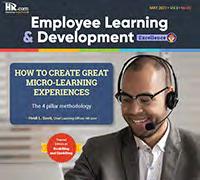
Excellence publications are my ‘go-to’ resource for contemporary and actionable information to improve leadership, engagement, results, and retention. Each edition offers rich and diverse perspectives for improving the employee experience and the workplace in general.

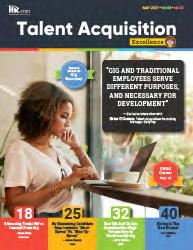


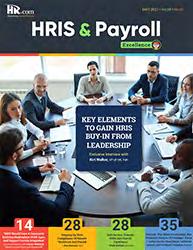

I regularly read and contribute to Leadership Excellence and Talent Management Excellence. I use many of the articles I read to augment my own presentations and I often share the articles with my clients. They are always quick, right on target for the latest issues in my field, and appreciated by my clients. If you want to stay up to date on the latest HR trends, choose a few of the different issues from the Excellence series of publications.
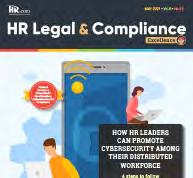


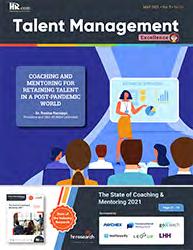
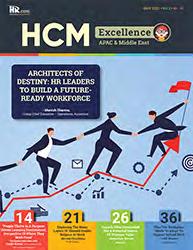
We’re eager to hear your feedback on our magazines. Let us know your thoughts at ePubEditors@hr.com
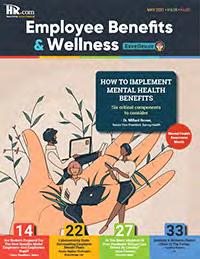
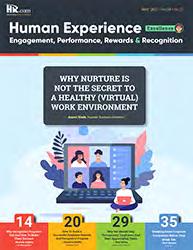
WHY EXCELLENCE PUBLICATIONS?
Julie Winkle Giulioni Author, Virtual /Live Keynote Presenter, Inc.’s Top 100 Leadership Speakers
Dr. Beverly Kaye CEO, BevKaye&Co.
10 Predictions For The Future Of HR Tech
Unveiling the future of HR with seamless integration, personalization, and AI
 By Brett Farmiloe, Terkel.io
By Brett Farmiloe, Terkel.io
Asthe HR landscape continues to evolve, we reached out to top professionals to share their insights into the future of HR tech. From seamless integration and AI personalization to focusing on employee experience and culture, discover the top 10 predictions and desires these HR leaders have for the future of HR technology.
● Rising Seamless Integration and AI Personalization
● De-coupling Technology from Service
● Adding AI and Data Analytics in HR Tech
● Shifting Towards Gamified Assessments
● AI-Enhancing HR Solutions
● Automating Hiring with Human Touch
● Improving Employee Experience with HR Tech
● Needing More Regulations
● Embracing Tech and Maintaining Human Connections
● Focusing on Employee Experience and Culture
Submit Your Articles HR Strategy & Planning Excellence presented by HR.com June 2023 7
COVER ARTICLE
Jefferson McCall, Co-Founder and HR Head, TechBullish
Rising Seamless Integration and AI Personalization
As HR technology advances, the key to success is the ability to integrate various platforms seamlessly.
A personalized experience for employees that leverages advanced analytics and machine learning algorithms to optimize hiring, onboarding, and performance management processes will increasingly be a must-have for HR tech products. The focus will be on developing human-centered technology solutions that prioritize employee experience and well-being.
As AI matures and natural language processing improves, chatbots and virtual assistants will also play an increasingly vital role in delivering engaging, streamlined HR services. The overarching goal will be to create an integrated digital ecosystem that puts people at the center, offering a one-stop solution for all HR-related needs.
Brett Ungashick, CEO and CHRO, OutSail


De-coupling Technology from Service
I predict that over the next few years, we will see many HR Tech companies (especially the large HRIS & Payroll companies) de-couple technology from service within their offerings.
Right now, buyers expect to get software and comprehensive support, training, and consulting. But, as businesses become more complex and dynamic, it’s not reasonable for tech companies to offer both exceptional tech and premium consulting.
I anticipate that the HR Tech vendors will cede this ground to their ecosystem partners who can offer a wider variety of services and be more nimble and targeted with their service offerings.
Submit Your Articles HR Strategy & Planning Excellence presented by HR.com June 2023 8 10 Predictions For The Future Of HR Tech
Tracey Beveridge, HR Director, Personnel Checks
Adding AI and Data Analytics in HR Tech
I believe that the focus of HR technology in the future will be on employing artificial intelligence to enhance the employee experience, streamline administrative activities, and streamline recruitment procedures.
Data analytics will also be essential in revealing information on employee retention, performance, and engagement.
The HR tech sector will innovate because of the integration of AI and data analytics, improving outcomes for both businesses and people.
Chloe Yarwood, HR Manager, Test Partnership


Shifting Towards Gamified Assessments
Gamification has been a popular buzzword in pre-employment testing circles for some time, but until recently, it hasn’t fully taken off. However, given the rise of highly effective and readily accessible AI, I can foresee a rapid shift away from traditional assessments and towards gamified assessments.
Traditional assessments are often heavily text-based, leaving them extremely vulnerable to cheating. Indeed, even online interviews are now highly susceptible to AI feeding candidates effective interview responses in real-time.
Gamified assessments, however, employ complex game mechanics that an AI cannot easily complete, forcing users to participate honestly. Consequently, gamified assessments could be the answer to the encroachment of AI in the online assessment space, and I anticipate a significant shift in this direction.
Submit Your Articles HR Strategy & Planning Excellence presented by HR.com June 2023 9 10 Predictions For The Future Of HR Tech
Susan Snipes, Chief People and Culture Consultant, GoCo
AI-Enhancing HR Solutions
We’re seeing many HR and Payroll vendors lean into AI. HR tech companies are using Artificial Intelligence tools for employee chat support to answer basic employee questions. Some are even using generative AI tools that pull data from multiple sources to create something new.
For example, GoCo’s HR AI tool supports HR professionals by creating custom forms and policy drafts. By providing AI-enhanced solutions, HR Tech companies elevate the HR function, allowing HR professionals to make the best and highest use of their time and energy.
Automating Hiring with Human Touch


I predict and wish for near-complete automation of hiring and onboarding processes. Why near and not wholly complete?
It’s a strong belief that there needs to be a human element during hiring and especially onboarding for actual human-to-human feedback. Yet having AI tools or software that can eliminate the menial tasks for HR would be a lifesaver and allow HR to apply skills to more important efforts.

Submit Your Articles HR Strategy & Planning Excellence presented by HR.com June 2023 10
10 Predictions For The Future Of HR Tech
Jarir Mallah, HR Specialist, Ling App
Brittney Simpson, HR Director, CallRevu

Improving Employee Experience with HR Tech
The field of HR technology is undergoing rapid evolution, with numerous trends and developments shaping its future.
One prominent focus is enhancing the employee experience through HR tech. This involves personalized onboarding, self-service HR platforms, tools for employee engagement, and continuous feedback mechanisms.
By leveraging technology to create positive employee experiences, organizations can significantly increase employee satisfaction, productivity, and retention rates. Ultimately, the goal of HR tech is to empower HR professionals, improve operational efficiency, enhance the employee experience, and enable data-driven decision-making. Embracing these trends and aspirations will enable organizations to cultivate agile, inclusive, and people-centric workplaces.
Samantha Rosenberg, Senior Director, Human Resources, AACC

Needing More Regulations
The biggest story in tech for HR and everyone else is AI. ChatGPT and other AI tools have started to help us with everyday tasks like drafting emails and writing job descriptions. I have heard of HR colleagues using ChatGPT to draft organizational policies.
I predict the use of AI tools will continue to grow, but I also predict we will see additional regulations like the ones coming out of the EEOC recently.
Submit Your Articles HR Strategy & Planning Excellence presented by HR.com June 2023 11 10 Predictions For The Future Of HR Tech
Embracing Tech and Maintaining Human Connections

As technology advances across every field of business, I know there is a fear, specifically in HR/People teams, of “How will tech affect HR roles?” With the fostering of ChatGPT & AI, one of the biggest misconceptions is that “we” will all be replaced by technology.
What I say to that fear is to use technology to your advantage and understand that none of these highly intelligent forms of tech are made possible without the input, review, and constant analysis of human beings. I find myself learning something new every day, and while I lean on technology to help with admin tasks, onboarding, benefits, etc., one thing will always remain true.
We need to continually build human connections with employees and understand that the human element of what HR leaders do will never be lost; it will just evolve. I am excited to embrace new ways of streamlining processes to ensure I can continue connecting with the individuals that I support.
Focusing on Employee Experience and Culture

HR technology holds immense potential for the future, enabling businesses to enhance productivity, optimize data management and analytics, facilitate better decision-making, foster transparent communication, and cultivate trust.
However, it is crucial to move beyond using technology solely for data management and transaction processing. The next generation of HR technology should focus on enhancing the employee experience and fortifying organizational culture.
While HRMS and HRIS systems have served their purpose in managing HR databases and transactions, it is essential to embrace new technology that aligns with HR philosophy. The actual benefits of technology implementation are directly correlated to the level of commitment to HR principles. It is vital to approach technology adoption thoughtfully, ensuring that the workforce is adequately prepared for the change. Merely implementing technology for the sake of it will not propel HR managers forward.

Submit Your Articles HR Strategy & Planning Excellence presented by HR.com June 2023 12
Charles Mangino, Head of People, Culture and DEI, Decusoft
Atul Mankad, Domain Expert, Naman HR
10 Predictions For The Future Of HR Tech Would you like to comment?
Brett Farmiloe is the Founder/CEO and currently the CHRO of Terkel.io
The Tech-Driven Transformation Of HR
Revolutionizing roles and redefining success
By Sam Chen, Fetti
The rapid advancement of technology has reshaped various industries, and the field of human resources (HR) is no exception. Revolutionizing HR functions like recruiting, revolutionizing talent acquisition, and enhancing the ability of companies to manage large teams using comparatively compact HR departments, these advancements are changing the way businesses approach human resource initiatives. In this article, we’ll address some of the ways that tech tools are changing how HR roles are performed, and the potential advantages of adopting a new way of approaching specific tasks.
Companies that are willing to embrace new, high-tech tools have already begun to streamline numerous HR functions, allowing HR professionals more time to focus on strategic initiatives like recruitment and hiring. At the same time, potential employees have leveraged existing technologies like social media to make their own decisions about the companies they are considering working for.

Utilizing Social Media in Job Recruitment
Social media platforms have become invaluable tools for job recruiters and job seekers alike. Organizations can leverage social media to extend their reach, connect with potential
candidates, and cultivate their employer brand. This is a relatively new trend that has recently gained momentum, and some companies — even the biggest hitters in tech and business — are underutilizing their social media presence to attract new job candidates.
Submit Your Articles HR Strategy & Planning Excellence presented by HR.com June 2023 13
TOP PICK
However, companies that are quick to adopt this strategy will find it easier to secure the top available talent, especially when it comes to the emerging Gen Z workforce. By utilizing social media, recruiters can showcase their company culture, values, and work environment, attracting individuals who align with their organization’s ethos. Moreover, social media provides valuable insights into candidates’ interests, skills, and professional networks, enabling recruiters to make informed hiring decisions.
Job seekers are increasingly using social media to research potential employers. This is especially true of the younger segment of the workforce, including Gen Z and Millennial job candidates. Nearly three-quarters of candidates in these age groups say they research a company’s social media properties in order to evaluate their brand and decide whether to apply. They gain valuable insights into company culture, employee experiences, and career growth opportunities. Social media affords potential job candidates the power to compare their own values with the stated goals of any organization.
A company’s social media presence is the largest and most public window into what it’s like to work there. With that in mind, HR professionals must proactively manage their organization’s social media presence to create an accurate and positive employer image. Tools such as sentiment analysis and social listening help
companies gather feedback and monitor online conversations, allowing them to address concerns promptly and enhance employee satisfaction while attracting new talent. Failure to do so can be dire, as 50% of job candidates say they wouldn’t work for a company with a bad reputation, even if it meant a larger salary.
Starbucks is an example of a company that effectively leverages social media platforms such as Facebook, LinkedIn, and Twitter to engage with potential candidates and share updates about career opportunities. Sharing stories from employees who have utilized the company’s tuition reimbursement program, for instance, not only fosters goodwill, but serves as a powerful recruiting tactic for young workers. Starbucks uses its social media presence to showcase its company culture, values, and employee experiences, attracting candidates who resonate with their brand.
AI & Machine Learning Add Speed And Efficiency
The HR technology landscape is continually evolving, bringing forth exciting trends that revolutionize HR practices. Artificial intelligence (AI) and machine learning (ML) algorithms are transforming candidate screening and selection processes, enhancing
efficiency. These technologies analyze vast amounts of data, enabling HR professionals to make more informed hiring decisions.
Numerous companies have successfully harnessed technology to optimize HR processes like these. For example, IBM’s Watson Recruitment, powered by AI, matches job candidates with available positions based on skills, qualifications, and cultural fit. This technology has not only improved the efficiency of the recruitment process but also increased the likelihood of finding the right candidate.
This integration of AI is just the tip of the iceberg, and as machine learning tools grow more advanced, there will continue to be new opportunities to utilize them in day-to-day tasks. AI-powered HR chatbots are another emerging trend that streamlines communication and enhances the employee experience, filling gaps where smaller HR teams struggle to keep up. Chatbots also handle routine inquiries, freeing up HR professionals’ time for more complex tasks.
Data from an IEEE survey reveals a full 95 percent of technology professionals believe that AI and machine learning will be the primary driver of innovation across every industry through at least 2027. Companies that take advantage of these emerging tech tools will be well-equipped to handle new challenges, while also enhancing employee satisfaction.
Submit Your Articles HR Strategy & Planning Excellence presented by HR.com June 2023 14
The Tech-Driven Transformation Of HR
AR & VR Are Changing Remote Work
Looking a bit further down the road, virtual reality (VR) and augmented reality (AR) technologies are expected to grow more important in training and development programs, providing immersive and engaging learning experiences, especially in the new age of remote-first work.

Studies have shown that most individuals learn better when there is a physical component to the work they’re doing. AR and VR technologies provide a sense of presence, which can boost a trainee’s attention and engage them in a meaningful way, enhancing the training process.
The speed at which these technologies are being adopted is slower than many predicted 5 to 10 years ago, but they are by no means
dead. As companies like Apple — which is rumored to soon reveal an AR/VR headset of its own — further push the tech into the mainstream, we’re likely to see their popularity impact remote and hybrid workplaces in a much more meaningful way.
The Future Of HR
The adoption of technology has revolutionized HR-related jobs and duties, empowering professionals to streamline processes, optimize talent acquisition, and enhance the overall employee experience. By embracing emerging trends and leveraging social media platforms effectively, HR professionals can elevate their roles, contribute to organizational success, and create a more efficient and engaging work environment.
In just the last two decades we’ve already seen monumental shifts in how work is being done. As we push forward into a tech-first future, we can expect HR roles to continue to evolve as new tools and approaches reshape our world.
Sam Chen is an entrepreneur, engineer, and problem solver. She is the CEO and co-founder of Fetti, a Gen Z career matching and education platform that helps young job seekers find positions that truly fit them, and assists companies in attracting the best available talent.
Would you like to comment?

Submit Your Articles HR Strategy & Planning Excellence presented by HR.com June 2023 15 The Tech-Driven Transformation Of HR
HR’s Role In Organizational Success, The Role Of Applied Improvisation
From administrative to collaborative leadership
By Theodore Klein, Boston Strategy Group
Everyone aspires to have a seat at the table, but no one feels this more acutely than an HR professional. For decades, many organizations’ view of HR has often been scornful; executives see them as a necessary evil, superfluous, unessential, and redundant rather than critical to the organization.
This assessment, however unfair, is a bit self-inflicted. There are countless HR units that perform necessary—but not strategic— administrative functions.
Transforming the reputation and purpose of HR units lies with HR leaders, who must be realistic about their value to each business unit in their organization. HR units must provide clear and compelling strategic value to gain a seat at the leadership table. But what is strategic importance, and how do we do it?
The good news is that progress is being made. Applaud’s 2023 Digital Employee Experience Trend Report found that executives view 61% of HR leaders as strategic business partners. (1,2). Improving HR’s position will require a targeted and triaged approach that identifies the critical business units where HR can provide strategic value and those that can’t.
Industries in growing, emerging, and rapidly evolving fields where the pace of change is high and intellectual talent are critical are best positioned to involve HR in organizational success. Biotech, life sciences, and high-tech manufacturing are among those that demand more from their HR units.
These are industries where team building is paramount, higher levels of communication and collaboration are essential, and innovation and creativity are the foundation of success. These are industries where recruiting and retaining talented staff, motivating professionals, and building high-performing teams are make-or-break propositions. In these industries, HR’s value to organizational success is clear; in others, it may be a bit cloudy.
As Liz Ryan writes in Forbes, “Rethinking HR requires transforming the view that HR people are seen as political and more concerned with their place in the company’s pecking order than with the welfare of the team” (6).
Submit Your Articles HR Strategy & Planning Excellence presented by HR.com June 2023 16
The Two Sides of HR
Distinguishing between two sides of HR – strategic and operational–is critical for HR to be the most successful. Every organization is unique and operates in a different market environment, so it’s helpful, to begin with, the widely-accepted ten major HR functions and separate them based on operational and strategic functions:
● Human Resource Planning and Org Structure Design
● Recruitment, On & Off Boarding
● Performance Management, Promotion, Rewards, and Succession Planning
● L&D, Employee Engagement, and Communication
● Administrative and Record-Keeping
● Health and Safety
● Industrial Relations and Legal Requirements
Operational or administrative HR responsibilities include all tasks essential to organizational function, though ones that do not necessarily add strategic, differentiable, or distinguishing benefits. Running payroll, record keeping, and managing benefits are all vital, legally-required tasks, but they don’t earn a seat at the table. Smaller and medium-sized HR units often have this focus.
Strategic HR, on the other hand, adds value, and plenty of it. Clear, consistent, and quantifiable processes for hiring the best talent ensure that innovation can
occur and productivity is at its highest. Consider the inherent value of poaching experienced professionals from a competitor in the BioTech industry or comprehensive training in the tech industry that keeps people at the bleeding edge of tech. Such initiatives directly influence an organization’s bottom line and can raise the value of HR units. The HR challenge is creating a clear, convincing, and compelling business value proposition to present to business executives and then delivering on the promise.
After making this distinction between operational and strategic HR, organizations must analyze competitive, economic, and marketing factors to determine how best to emphasize strategic and operational elements for each business unit. While there is no one approach, such efforts must be tailored to each HR unit’s capabilities, resources, and market position. However, several strategic elements leverageable by HR are practical across all business circumstances.
Prioritizing Strategic HR for Organizational Success
Strategic HR provides value to an organization and improves an HR unit’s credibility, but what can HR invest in to be strategic? The most essential element of strategic HR is getting everyone in each business unit
on the same page, synchronized, and aligned. All must be united in both setting appropriate goals and working toward them. The success of this endeavor hinges on five key areas: trust, collaboration, communication, innovation, and leadership. The best business/HR teams maintain open communication where innovative HR strategies can flow freely; where roles, responsibilities, and accountabilities are clear; and where business/HR teams can pool their knowledge and resources to accomplish strategic, not operational, goals.
These HR actions need to be pervasive within a business. It’s just as crucial for teams to collaborate and communicate as for those teams to work smoothly across business lines. Furthermore, professional staff, managers, and executives must understand and trust each other’s actions. Such trust leads to engagement, engagement leads to productivity, and productivity leads to profitability.
“If you don’t understand the business levers, or the strategy, or how it impacts the people, you’re going to be an HR person that builds things that nobody needs, nobody wants, and nobody can use,” says Brigette McInnis-Day, chief people officer at enterprise software company UiPath. “I think that’s the big shift. What we’re seeing now is more analytical, understanding the business, and having a people strategy 100% linked to a business strategy.”(4)
Submit Your Articles HR Strategy & Planning Excellence presented by HR.com June 2023 17
HR’s Role In Organizational Success, The Role Of Applied Improvisation
Drawing Back the Curtain on a New Approach
It’s not enough to prioritize strategy; action must be taken. And if the goal is to get all organizational stakeholders to trust and work together, drawing lessons from an unusual source –improv theatre can make great sense. For instance, consider a professional improv theater group or even the popular TV show “Whose Line Is It Anyway?”
Improv theatre operates under key constraints: It’s a team-based activity where participants move forward without a script. The cast has to adapt to changes on the fly, generate authentic responses at the moment, and rely on their skills to navigate uncertainty. They must
be fully present and share equal accountability with everyone on stage. Cast members in an improv theater group have been prioritizing and honing these exact business skills for decades.

The Role of Applied Improvisation (AIM)
Considering that these basic skills are utilized daily in modern business, it was inevitable that the lessons and principles of improv theatre could be directly applied to the business world. AIM programs have emerged as a great asset that HR can strategically implement to build professional staff and management competency and capability within their organizations.
AIM, or applied improvisation, is an innovative approach to enhancing leadership, management, and team function. In a professionallytaught AIM program, participants learn to apply fundamental collaboration principles and develop vital business skills to improve organizational function. This technique entails dropping the humor aspect, as dedicated AIM instructors instruct participants to look past an improv performance’s comedy, cleverness, and amusing nature. This point must be stressed. AIM is wholly disconnected from entertainmentfocused improv theatre and entirely concerned with building better business professionals.
Submit Your Articles HR Strategy & Planning Excellence presented by HR.com June 2023 18
HR’s Role In Organizational Success, The Role Of Applied Improvisation
During the engaging activities and discussions, participants are instructed to hone in on what an improv performer is thinking and doing. AIM instructors point out how the performers listen to each other, always focusing on what was just said and building upon it – dismissing ideas outright leads to a breach of trust among participants and creates chaos. When debriefing an exercise, participants examine their behaviors in a safe and judgment-free environment, gaining insight, skill, and proficiency in better business behaviors.
In maintaining lightning-fast communication and offering ideas, participants effectively deal with uncertainty and embrace it to progress the business strategy. They’re making connections between ideas, adopting roles at the moment, and cooperating toward a common goal. Most importantly, they’re working as one, sharing credit and supporting each other.
Conclusion
AIM shows HR that the core elements of organizational success are already being demonstrated on an improv stage, and the value of this revelation for strategic-minded HR professionals can be immense. Embracing and empowering communication, collaboration, innovation, teamwork, and leadership leads to significant business success.
As Francesca Gino, an Associate Professor at Harvard Business School, in Using Improv to Unite Your Team (Harvard Business Review May 2019 said, “In my academic research, I’ve looked at many different types of teams, at a wide variety of organizations all over the world. The group that communicated best, with everyone contributing and learning, wasn’t in a corporate office park; it was in an improv comedy class.” (8)
All it takes is for HR to establish a few well-designed programs and recognize that trust is the glue that holds organizations together. Then, HR professionals prioritizing strategic HR will not just receive a seat at the table but earn it.

References:
1. https://www.digit.fyi/ are-hr-leaders-considered-strategicpartners-in-business/
2. https://www.applaudhr. com/2023-digital-employee-experience-trend-report
3. https://sloanreview.mit.edu/article/ reimagining-hr-for-better-well-beingand-performance/
4. https://www.fastcompany. com/90849790/ why-more-people-want-work-hr
5. https://www.linkedin.com/pulse/ linkedin-jobs-rise-2023-25-us-rolesgrowing-demand-linkedin-news/
6. https://www.forbes.com/ sites/lizryan/2016/07/27/ ten-reasons-everybody-hateshr/?sh=2635bbd35af4

7. https://www.simplilearn.com/ functions-of-hrm-article
8. https://hbr.org/2019/05/ using-improv-to-unite-your-team
Submit Your Articles HR Strategy & Planning Excellence presented by HR.com June 2023 19
to comment?
Would you like
Theodore Klein is Managing Partner at the Boston Strategy Group
HR’s Role In Organizational Success, The Role Of Applied Improvisation
What’s Ahead In HR Tech?
Top trends and tools that every employer should be aware of
By Jared Pope, Work Shield
up-to-date on the latest trends in HR technology allows employers and their employees to streamline everything from payroll, employee benefits, recruitment, and more - saving valuable time, money, and resources. A recent study from Sage found that 89 percent of the C-suite and 83 percent of HR leaders say HR technology allowed them to remain more flexible to changing needs of the workplace, keeping their businesses more resilient. As HR technology continues to evolve to meet the demands of the workplace, it’s important for organizations to keep a pulse on the latest trends and prioritize the HR technology that will provide the greatest return on their investment.
Staying
To understand the HR tech offerings that are shaping the current workforce and what to expect in the future of HR tech, here are the top trends and tools that every employer should be on top of
1. Automation and AI
With automation and AI tools on the rise in virtually every industry, including HR technology, it’s important for organizations to be educated on the advantages and disadvantages. From
recruitment and selection to payroll and benefits administration, automation can enhance accuracy, reduce bias, free employees from repetitive business processes and allow employees to focus on the tasks at hand that matter most. Employers can also cut business costs overall.

Submit Your Articles HR Strategy & Planning Excellence presented by HR.com June 2023 20
TOP PICK
With AI, many organizations may see these tools as a way to increase productivity and efficiency, but employers should keep a close eye on these tools, particularly as it relates to HR technology. The EEOC recently released guidance on the use of AI tools with HR, sharing that employers could be held liable if an AI tool results in a discriminatory impact on the organization. Without proper guidelines and safeguards, AI tools or AI-related vendors that are used for hiring, monitoring employee performance, or determining pay and promotions could be deemed discriminatory. While the trend of AI isn’t slowing down, employers should expect that it will continue to evolve, and they will need to stay on top of these changes and how they affect the workplace and put organizations at risk.
2. Full-Service Incident Management Platforms
When handling workplace misconduct, internal policies and procedures are not always effective. In addition, managing situations internally can be timeconsuming, unsuccessful and even include hurtful unconscious (or even intentional) bias - increasing an organization’s reputational risk and more. HR tech solutions like third-party incident management platforms remove these issues and the inherent risks, giving employers peace of mind that every incident is properly investigated and resolved.
Organizations can expect to see a continued increase in incident management platforms.
While many provide similar offerings, it’s important to evaluate a few key factors when determining which solution works best for your organization. These factors include effectiveness and timeliness of resolving incidents, access to real-time data and analytics, and accessible reporting tools for employees (preferably 24/7). As organizations look ahead at HR tech, these factors will be important to keep in mind as organizations determine the best solution.
3. Prioritizing People Analytics
HR technology is now providing greater data to employers using people analytics. People analytics allow employers to pinpoint gaps in employee inclusion, identify immediate employee needs and strengthen business decisions. They also help organizations to streamline operations by showcasing trends in workplace issues, so employers can customize solutions instead of implementing a blanket approach across the entire organization. By having real-time access to people analytics, organizations can increase their visibility to the cultural health of their organization, allowing them to quickly streamline processes, mitigate risk, and make strategic decisions based on their people.
By understanding the trends in HR technology and what’s to come, organizations can prioritize investments that will allow them to remain flexible in the face of an ever-changing workplace.
HR professionals know the power of HR technology and understand the ROI that these tools can offer organizations. Whether saving resources, protecting reputations, mitigating risk or improving workplace culture, these solutions will remain a top trend for workplaces in every industry and will continue to evolve as we look ahead in HR tech.
Jared Pope is a Benefits and Employment Law specialist with over a decade of experience in human resources, ERISA, benefits, and employment matters. Recognizing drastic issues within the “system” for managing workplace harassment and discrimination, Jared founded Work Shield in 2018, as the first and only start-to-finish workplace harassment and discrimination solution and technology platform.
Would you like to comment?

Submit Your Articles HR Strategy & Planning Excellence presented by HR.com June 2023 21
What’s Ahead In HR Tech?
What Is HR’s Role After A Data Breach?
Navigating cyber threats and minimizing damage through effective HR practices
By Zachary Amos, ReHack
In the age of computer technology, cyberattacks and data breaches are a genuine threat to an organization’s safety. Businesses of every size and specialty are assaulted by hackers regularly — with the damage being more extensive than ever before. It’s not uncommon for the costs of cyberattacks on businesses to reach figures in the millions.
It’s now more important than ever for HR departments to know what to do after a data breach.
Modern HR departments can help recognize data breaches and minimize the damage they do to a company.
Communication
The most significant role HR departments need to play to counter a data breach involves communication. All data breach response best practices require clear relays of communication between every branch of the
organization in order to minimize damage.
HR departments need to ensure all departments understand the situation, how severe it is and what they need to do to help the business during this crisis. In addition, it is also HR’s job to properly communicate employees’ questions and concerns to leadership — and leadership’s instructions to the employees.
Making sure the entire company is on the same page during a crisis is paramount to ensure the organization stays cohesive.
Regulatory Compliance Assessments
Another role HR can take on that’s part of regular data breach response best practices is completing regulatory compliance assessments.
These assessments are carried out in cooperation with any legal departments the company has partnered with to determine if any privacy regulations regarding data use and storage have been violated.
An example of such regulations would be the General Data Protection Regulation. These were put into place to ensure companies handle the personal information of their clients in ways that do not violate their privacy. A data breach could open the organization to legal ramifications. HR departments can help prevent or at least mitigate that kind of damage.
Collecting Important Information
Once a data breach is discovered, one of the most important things a company has to do is collect as much information as it can about the breach. When did it happen? What data was stolen? How did it happen?
Submit Your Articles HR Strategy & Planning Excellence presented by HR.com June 2023 22
HR departments play a critical role in collecting this information. Most of the time, data breaches are caused by human error; for example, a simple phishing email in 2019 allowed hackers to access federal contractor Miracle Systems’ networks, compromising credentials for federal government databases. Employees who are not aware of cybersecurity threats such as phishing scams can inadvertently let malware into the computer system — leading to a data breach.

It is up to the HR department to work together with other departments to find the cause of
the data breach so that the company can inform all of the relevant parties.
The Role of HR Is Essential
Knowing what to do after a data breach is essential for any company in the modern area. The many roles HR can play to minimize the damage make it an essential part of what comes after a breach. From collecting data to working with other departments, having a well-trained HR department can go a long way to getting a company back on track.
Would you like to comment?

Submit Your Articles HR Strategy & Planning Excellence presented by HR.com June 2023 23
What Is HR’s Role After A Data Breach?
Zachary Amos is a tech writer with a special interest in HR technology, automation, and cybersecurity.
In an exclusive interview with HR.com, Anna talks about the evolving role of CHROs, challenges in the HR landscape, the future of talent, and much more.

The Future Of HR In Organizational Success
Excerpts from the interview:
Q.What is the most significant challenge currently faced by CHROs in relation to the evolving talent landscape and its impact on human resources?
Anna: While CHROs constantly face big issues, one of the biggest issues I’m facing right now is the talent landscape— it’s going through both a revolution and an evolution, which is having a significant downstream impact on human resources.
If you think about even the past twenty years, the differentiator, or the value proposition that made companies stand out, was their access to technology and the systems they utilize. Now, that access to technology is more or less available to all. What is really creating that differentiator for organizations is the people. I once read this great quote—it was about how, where it used to be this conversation around HR having a seat at the table, HR is the table now.
A company is built on its talent, and HR is the foundation for attracting really high-quality, high-caliber individuals and creating each step in the employee lifecycle that helps to retain those individuals. It’s about allowing the sort of opportunity that keeps people upskilling and moving within the organization and within their careers.
Submit Your Articles HR Strategy & Planning Excellence presented by HR.com June 2023 24
“When I think about the future of human resources and talent more broadly, I see a future powered by data-driven people decisions,” says Anna Lyons, CHRO, Alegeus.
Straight Talk with HR.com
TOP PICK
Q&A with Anna Lyons, CHRO, Alegeus
Q.Howdo you foresee the role of CHROs evolving in response to changes in traditional HR functions and the growing emphasis on creating a comprehensive employee experience?

Anna: From my perspective, traditional “human resources” was very much around the compliance and administrative components of having an employee at an organization—whether it be an offer letter or onboarding or benefits, that was really the focus of what used to be a relatively small human resources function.
What I see now in the evolution that’s occurring is that the talent team is charged with creating a holistic employee experience—something that is differentiated and unique to that specific organization.
More and more, human resources professionals are looking at each touchpoint in the employee lifecycle. From the very first contact, through onboarding, through the culture and values of the environment in which this individual gets to work, and even through the separation process, every aspect of the lifecycle is a touchpoint at which the employee decides if they want to continue their journey with the organization.
Q.What advice would you give to benefits administrators, brokers, or consultants seeking to capture the attention and obtain buy-in from CHROs?
Anna: One really important role of talent professionals is to be accurate and compelling storytellers. And by that, I mean that the talent organization is charged with creating the values and the culture that really permeate the organization.
When I think about a way in which someone could get both time with the CHRO as well as a seat at the table, it is very much around how they contribute to that story.
As an example, in the past, many viewed benefits as sort of a necessity—something basic and expected that you offer in an employer-employee
relationship. What I want us to think about is how those benefits reflect the culture and the values we are trying to create. For instance, if an employer is really committed to work/life balance and supporting the “whole person,” the choices they make around benefits might involve things like improved family leave, information around fertility services and adoption services, etc.
And if the individual who wants time with the CHRO can tie their piece to that broader culture and values puzzle, it is much more likely that I will select that particular organization or vendor. Because they are helping me to create that narrative that we are trying to bring to life each and every day.
Q.Howhas the perspective of HR leaders towards benefits evolved over the past two years?
Anna: Benefits have become a hot topic within the broader talent community, for two key reasons.
First and foremost, obviously, organizations are paying attention to every dollar spent. And so ensuring that you have value tied to each of those dollars is critically important. Any capabilities, levers or otherwise, that a CHRO can pull to lower costs for the employer while still providing robust benefits for the employee are top of the list. When you think about how much an employer spends on benefits, it is a truly significant amount. Steering those dollars toward things that both attract and retain employees is critical.
Submit Your Articles HR Strategy & Planning Excellence presented by HR.com June 2023 25
Straight Talk with HR.com
Second, for the first time in a long time, we have five different generations within the workforce. As you can imagine, the types of benefits they want and need are hugely different. It’s critically important that you create a benefits package targeted to each of those unique needs. That might include an improved health savings account that allows individuals who are a little later in their journey to save for future medical costs. Or it might be a lifestyle spending account that helps a new parent pay for daycare services or helps with educational expenses. These are some of the new offerings outside of the typical medical-dental-vision area that we’re looking to as attraction and retention tools in this talent market.
And so figuring out both how you balance the first piece, which is around cost savings, with the second piece, which is around unique and tailored benefits that meet employees where they are, is the name of the game as it relates to HR and benefits.
Q.What insights or predictions can you provide regarding the potential future of the talent landscape?
Anna: When I think about the future of human resources and talent more broadly, I see a future powered by data-driven people decisions.
Over the past few years, the amount of data related to talent has increased significantly. Access to claims data, the ability to track why an employee is leaving, understanding different demographics, how diverse a workforce is—all of that is certainly present and growing.
What we have not seen yet is an effective and efficient way of taking all that data and turning it into people insights. As an example, one of the things I am particularly excited about from a data perspective is productivity. In this post-Covid environment, we spend a lot of time talking about where an individual should work—whether they are as productive working from home as they are working from the office. What employees have told us time and time again is that they want the choice, they want the flexibility. And what employers are saying is they want the output, right? So the ability to understand productivity data is hugely important, so we can ensure we respect and balance everyone’s priorities.

Submit Your Articles HR Strategy & Planning Excellence presented by HR.com June 2023 26
Straight Talk with HR.com
you like to comment?
Would
Enhancing Efficiency, Productivity, And Employee Experience With An HR Tech Stack







How do I choose an HR tech stack that is right for me?






 By Alana Pratt, BrightHR Canada
By Alana Pratt, BrightHR Canada





The emergence of technology has brought about a revolution across numerous industries, and the field of HR is no exception.
HR departments now find themselves playing an integral role within their organizations than ever before. Technology played a pivotal role in enabling teams to reclaim valuable time previously consumed by mundane administrative tasks, such as documentation and policy revisions. This allows HR professionals to shift focus and devote more time and energy to strategic initiatives that drive overall business success.
What Is An HR Tech Stack?
An HR tech stack refers to a collection of interconnected digital tools and software that are utilized to enhance, simplify, or aid various HR functions within a company.


This blend of HR technology can effectivity streamline intricate processes like recruitment and hiring, as well
as automate administrative duties, such as payroll management, employee perks, and benefits administration.



Submit Your Articles HR Strategy & Planning Excellence presented by HR.com June 2023 27
Why Is an HR Tech Stack so Important?
A robust HR tech stack is crucial for businesses for several of the following reasons:
1. Improved digital employee experience: Just an in their personal lives, employees expect technology to simplify processes in the workplace also. Access to streamlined and efficient digital HR tools enhances the overall employee experience. It increases engagement, boosts productivity, and ultimately contributes to an improved customer experience.
2. Minimized mistakes: Digitalizing complex processes and automating administrative tasks reduces the potential for errors caused by human oversight. For example, manual entry of deductions or changes in pay rates can lead to payroll errors when done in multiple places.
3. Increased effectiveness: By leveraging technology and automating manual tasks, HR professionals can be more efficient and productive in their roles. Time-saving automation allows for
data collection, analysis, and generating reports, enabling data-driven decision-making. These efficiencies free up time to focus on strategic initiatives and better serve both employees and management. Additionally, the saved time translates into cost savings for the organization.
A solid HR tech stack enables HR professionals to be more effective in their roles, enhances the digital employee experience, and minimizes mistakes through automation, ultimately driving efficiency, and productivity, and improving organizational outcomes.

Submit Your Articles HR Strategy & Planning Excellence presented by HR.com June 2023 28
Enhancing Efficiency, Productivity, And Employee Experience With An HR Tech Stack
How Do I Choose an HR Tech Stack that Is Right for Me?
Building an HR tech stack requires careful planning and consideration. Here are the three key steps to follow:
1. Identify specific needs and areas of improvement: Before exploring new software and tools, it is important to clearly understand your team’s needs. Evaluate your current systems and identify any gaps or inefficiencies. Map out your existing workflows for payroll, recognition, and benefits, and determine areas that require improvement. Consider tasks that consume excessive time
and resources for you and your team.
2. Ask the right questions: When evaluating different tools and solutions, it is important to ask relevant questions to compare and assess your options. Here are some suggestions:
● How does this tool align with company goals and objectives?
● How would this tool improve my workflow?
● What security measures are in place to protect sensitive HR data?
● What is the track record and reputation of the vendor or provider?
3. Determine your priorities: After identifying areas for improvement, you need to prioritize them based on their impact and feasibility. Unless you have an unlimited budget, you need to choose where to invest your resources. Involve your senior leadership team in this process to ensure alignment with the organization’s strategic initiatives.
By following these steps and asking the right questions, you can develop a well-planned HR tech stack that addresses your specific needs, aligns with your organization’s goals, and enhances the overall efficiency and effectiveness of your operations.

Alana Pratt is an HR Advice Specialist at BrightHR Canada.
Would you like to comment?

Submit Your Articles HR Strategy & Planning Excellence presented by HR.com June 2023 29
Enhancing Efficiency, Productivity, And Employee Experience With An HR Tech Stack
HRCI® & SHRM® CERTIFICATION PREP COURSES
GROUP RATES AVAILABLE
For HR Professionals
Show that management values the importance of the HR function, and has a commitment to development and improvement of HR staff.
Ensure that each person in your HR department has a standard and consistent understanding of policies, procedures, and regulations.
Place your HR team in a certification program as a rewarding team building achievement.
For Your Organization
Certified HR professionals help companies avoid risk by understanding compliance, laws, and regulations to properly manage your workforce.
HR Professionals lead employee engagement and development programs saving the company money through lower turnover and greater productivity and engagement.
A skilled HR professional can track important KPIs for the organization to make a major impact on strategic decisions and objectives, including: succession planning, staffing, and forecasting.
|
HR.com/prepcourse CALL TODAY TO FIND OUT MORE 1.877.472.6648 ext. 3
sales@hr.com
1 . Less expensive than a masters or PhD program, and very manageable to prepare with
2. legislation and best practices
3. Recognized, Industry benchmark, held by 500,000+ HR Professionals
Group Rate Options
We offer group rates for teams of 5+ or more for our regularly scheduled PHR/SPHR/ SHRM or aPHR courses.
For groups of 12+, we can design a more customized experience that meets your overall length of the course.
Groups rates for HRCI exams are also available as an add-on.
All group purchases come with 1 year of HR Prime membership for each attendee to gain the tools and updates needed to stay informed and compliant
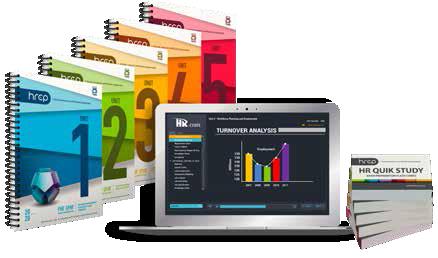
CALL TODAY TO FIND OUT MORE
1.877.472.6648 ext. 3 | sales@hr.com | HR.com/prepcourse
1 2 3
Why Data Must Anchor People Operations
Powering organizational growth
By Ian White, ChartHop
Whileorganizations and executive teams have faced unprecedented challenges in the past few years and have been forced to adapt to new workplace norms, perhaps no business function has evolved more significantly than the modern HR team. Traditional HR practices focused heavily on compliance, policy, and employee support. But those traditional HR practices alone cannot effectively address all the actions needed to attract and retain employees. Organizations need strong people operations to build on traditional HR responsibilities by incorporating people-first initiatives and developing a data-backed culture.
A strong People Operations function that fuels organizational growth and prioritizes employees must be anchored by data. Gathering and providing real-time access to organizational data helps People and Finance leaders make evidence-based decisions related to:
● Talent management, development, and retention.
● Performance evaluations.
● Employee engagement and satisfaction.
● Compensation.
Data-backed decisions across all those categories align organizations with their overall goals, enabling leaders to optimize their workforce and employee experience.
Talent Management, Development, and Retention
Having reliable, accurate data help organizations deliver on strategic talent initiatives. By drawing in data-driven people analytics, People Operations teams can identify high-potential employees and make better decisions related to succession planning, leadership development, and retention.
Every business needs to prepare for its future. Succession planning offers one key strategy to ensure a business’s long-term success. It allows organizations to identify and develop business leaders (specifically for the C-Suite) to replace current personnel when needed. The process starts with an in-depth understanding of employees, reporting structures, and knowledge sets.
Data — including met key performance indicators (KPIs), promotion rates, and tenure — provides objective information about job performance that informs succession planning and reduces bias in promotion rates. For example, an employee consistently meeting or exceeding their sales quota may indicate their ability and readiness to assume a leadership role. Further analyzing data by demographics, including gender, race, and ethnicity, helps identify potential biases and disparities in the promotion process. If certain groups are consistently underrepresented in promotions, leaders can address bias or systematic barriers.
Submit Your Articles HR Strategy & Planning Excellence presented by HR.com June 2023 32
TOP PICK
An employee-first culture requires companies to invest in people’s growth. Over 90% of employees say they’d stay longer at a company invested in their professional training. One way to increase employee tenure and help them grow is through leadership development
Data helps People leaders identify skill gaps and workforce needs, informing organizations’ strategic decisions about professional development programs. By dialing into metrics such as employee training time, People leaders uncover whether employees and departments receive equal access to training opportunities.
After using data to identify gaps in training, companies can’t just offer a learning and development opportunity and move on. Leaders must:
● Give their employees direction on using these benefits.
● List recommended programs, courses, and resources by the department.
● Conduct check-ins with department heads to ensure employees get value from available opportunities.
Organizations prioritizing employee retention have more positive organizational cultures. When tracked and used to drive strategic decisions, employee retention rate helps People leaders avoid talent shortages and address employee needs.
A healthy retention rate indicates strong organizational health. To determine if their organization has a healthy retention rate, leaders should:
● Compare the current retention rate to past rates and look for trends.
● Determine if fluctuations tie to internal events (i.e., new policies or initiatives — or lack thereof).
● Compare the retention rate with the industry average.
Staying ahead of industry benchmarks and improving retention rates requires listening and responding to employees. Employees prioritize work-life balance, career advancement opportunities, compensation and benefits, and an inclusive culture. Many employees connect their sense of purpose to their work and are more likely to stay with a company that celebrates their efforts and allows them to work on projects they feel passionate about.
Performance Evaluations
Managers must collaborate with their employees to set clear goals, KPIs, and objectives and key results (OKR). The results of those goals should inform performance reviews — not a manager’s personal interpretation of good performance.
Objective performance data combats subjective biases that could arise in performance reviews and evaluations. Recency bias — a tendency to emphasize recent experiences — happens when managers only evaluate employees through the lens of a recent adverse event, like an account loss, instead of taking into account the entire performance management cycle.
To reduce the chance of recency bias, managers should continuously review employee data. Bi-weekly, monthly, quarterly, or bi-annual check-ins offer a more holistic view of employee performance. Data helps managers guide these employee conversations, uncover what’s influencing lagging KPIs, address smaller problems before they escalate into more significant issues, and recognize accomplishments.
Employee Engagement and Satisfaction
Many employees won’t settle for an organization that doesn’t strategically prioritize engagement. A culture of engagement is no longer an option but an urgent requirement. Employees — especially those disengaged at work — want a reason to feel inspired. Nearly 95% of people managers say a positive workplace culture creates a resilient team of employees. Engaged employees who feel good about their company and its culture show up and do more work.
Submit Your Articles HR Strategy & Planning Excellence presented by HR.com June 2023 33
Why Data Must Anchor People Operations
Leaders can track employee engagement through pulse, feedback, and employee net promoter score (eNPS) surveys. These insights allow People leaders to identify areas for improvement, tailor initiatives to address specific concerns and track the impact of initiatives on employee engagement and satisfaction over time.
Organizations focusing on employee engagement and satisfaction see greater profitability and stronger employee wellness. This focus must include concrete performance management activities like clarifying work expectations, providing employees with what they need to do their work, and promoting positive coworker relationships.

Compensation
Over 70% of employers say their people are fairly compensated. Yet only 36% of employees would agree. People now expect more from compensation
packages than money. Mental health coverage, 401k plans, living stipends, and student loan repayment are just a few of the benefits employees seek. Offering these benefits (and more) helps organizations create competitive and employee-first compensation packages.
To make informed decisions about compensation strategy — while attracting new and retaining existing talent and staying competitive — organizations must consult both performance data and insightful market trends reporting. Leaders must consult data sources relative to how their industry approaches to pay and create compensation benchmarks.

Data also helps People and finance leaders spot trends and improvement opportunities to equally compensate people in the same levels and roles, avoiding biases based on personal relationships and other extraneous factors.
People and Finance leaders can use technology like a People Operations Platform to visualize and act on their data across all categories. This single source of truth acts as the main point of action for the people-first processes, programs, and initiatives of an organization’s People Operations function. By making data the anchor of People Operations, leaders can set goals, measure progress, and make informed, people-first decisions.
Ian White is the CEO, CTO, and Founder of ChartHop, a People Operations Platform. Previously, he was the founder and CTO of Sailthru, the marketing cloud delivering billions of personalized newsletter emails per month for top publishers and e-commerce brands. Before that, Ian was the first head of engineering at Business Insider and built the publishing platform that powers today’s highest-trafficked business website.
Would you like to comment?
Submit Your Articles HR Strategy & Planning Excellence presented by HR.com June 2023 34
Why Data Must Anchor People Operations

ePublication EditorialCalendar2023 Checkoutthenewandupcoming themedHRtopicsinHRStrategy& PlanningExcellence. Check ePublications Editorial Calendar Here. Would you like to submit an article? | Write to us at ePubEditors@hr.com Submission Guidelines 1 Building Impactful Employee Resource Groups JUL 2023 2 CHRO Special Issue - Interviews AUG 2023 3 HR and the Board SEP 2023 4 The State of People Analytics OCT 2023 5 Building a Technology Road map NOV 2023
Nurturing Natural Intelligence For A Positive And Productive Team Environment
Strike the right balance between AI and NI
By Vivek Nigam and Satish G, BeRemote
Artificial Intelligence (AI) is now the zeitgeist of our lives – both personally and professionally. Let’s face it, for better or worse, AI is the new cool kid on the block. Everyone wants to hang out with it, use it, and show off their fancy tools and their successes.
But while companies are busy swiping right on AI, they seem to be ghosting a critical component of success in the workplace: Natural Intelligence (NI). Natural intelligence is important in team engagement for several reasons – notably in its ability to promote trust, resolve conflict, and improve communication.
Here are a few ways in which natural intelligence can contribute to a positive and productive team environment:
1. Building trust: Natural intelligence helps team members understand and connect with each other on an emotional level. This can help build trust and rapport, which is crucial for effective collaboration, leading to better engagement. Building trust is like hiking up a mountain - it’s a journey, and you need to pack the right gear. Just like how you wouldn’t climb a mountain in flip-flops and a Hawaiian shirt,
you can’t build trust without the right tools. Building trust is a journey and things such as timely recognition, honest and transparent communications, etc. will help.
2. Improving communication: Effective communication is essential for successful team engagement, and NI can help team members communicate more effectively. By understanding the context, content, and emotions of others, team members can avoid misunderstandings. This is key to strong team engagement. Clear and constructive communication is like a unicorn - we all know it exists, but it’s rare and elusive. But fear not, we can increase our chances of finding it by using different modes of communication. Some people prefer to text, while others prefer to send an email or jump on a video call. It’s like ordering pizza - some people like thin crust, while others prefer a deep dish. So, provide teams with a communication buffet and let everyone choose their own preferred mode. Regarding communication and pizza, there’s no such thing as one size fits all.
Submit Your Articles HR Strategy & Planning Excellence presented by HR.com June 2023 36
3. Resolving conflict: Teams are like a box of chocolates - you never know what you’re going to get. You could bite into a sweet, creamy center or end up with a bitter, nutty surprise. And just like how different chocolates have different flavors, team members have different personalities and perspectives, which can sometimes cause conflicts. Natural intelligence can help team members manage and resolve conflicts like a master chocolatier - turning bitter battles into sweet victories. Constructive conflict resolution also leads to better engagement among teams. Tools that allow video, audio, chat and rich emoticons can go a long way. Just like how a well-timed trick play can catch the opposing team off-guard, using emojis and GIFs can lighten the mood and help diffuse tension. Active listening techniques like nodding or repeating back what the other person said show that one is engaged and listening.
Motivation and morale are critical factors in team engagement and productivity. Natural intelligence enables team members to understand and empathize with each other’s feelings and motivations. This heightened emotional awareness can help team members provide vital support, recognition, and
encouragement to one another, which has been proven to boost engagement and improve motivation and morale within the team.
Tools that allow instant recognition and celebration of team’s accomplishments, milestones, etc. will also help in improving motivation. Just like how a touchdown celebration can get the whole stadium hyped, using tools for instant recognition and celebration can boost morale within the team.
AI may be smart, but NI is where the real MVPs shine. Successful organizations know this, and that’s why they’re harvesting the power of natural intelligence while keeping AI in the game. And just like how a star athlete needs a combination of training techniques to stay on top of their game, developing natural intelligence involves rewards, boosting self-esteem, empathy, and a whole playbook of techniques.
Overall, NI plays a pivotal and indispensable role in team engagement, as it promotes a range of critical factors including trust, conflict resolution, motivation, and effective communication. This leads to greater engagement with improved collaboration, enhanced creativity, and innovation, all of which contribute to greater productivity and success.
Submit Your Articles HR Strategy & Planning Excellence presented by HR.com June 2023 37
Nurturing Natural Intelligence For A Positive And Productive Team Environment
Boosting natural intelligence is no piece of cake, but it’s not rocket science either. Here are a few steps that can set organizations in the right direction:


1. Timely recognition, honest and transparent communications. Honesty is the best policy!
2. Multiple communication mechanisms. Email, chat, call or even carrier pigeon, make sure team members have different ways to reach each other.
3. Timely conflict resolution. Don’t let disagreements simmer like a burnt cookie!
4. Boost morale with timely celebrations and recognitions. Nothing lifts the spirits like
a little pat on the back or a plate of freshly baked cookies.
5. Drive with NI and supplement with AI. Think of AI like a cookie cutter - it helps you get the perfect shape, but the real magic comes from the dough (aka your team’s natural intelligence).

Modern engagement platforms with a panoply of features offer an easier way to promote both NI and AI into daily work lives. By utilizing these platforms, organizations can significantly boost their team engagement, thereby greatly improving their productivity and retention.
Would you like to comment?
Submit Your Articles HR Strategy & Planning Excellence presented by HR.com June 2023 38
Nurturing Natural Intelligence For A Positive And Productive Team Environment
Vivek Nigam is the CEO and Satish G is the CTO at BeRemote.
How to Retain
5 Reasons Why Skills Should Be Critically Connected to Your Performance Strategy
How Skills-Based Hiring Can Close the
The Future of Performance Management July 12-13, 2023 REGISTER The State of Pay Equity July 19, 2023 REGISTER The State of Human Experience in the Workplace August 16, 2023 REGISTER Engaging
Organizational EX Maturity June 28, 2023 12:00 PM - 1:00 PM ET REGISTER
Frontline Workers through Operational Communications to Drive
Talent
July 18, 2023 12:00 PM - 1:00 PM ET REGISTER Support
Wellness and Benefit Options July 11, 2023 11:00 AM - 12:00 PM ET REGISTER
Employees and Boost Engagement June 29, 2023 1:00 PM - 2:00 PM ET REGISTER
Gap
Employees through Financial
Navigating High Inflation:
July 12, 2023 11:00 AM - 12:00 PM ET REGISTER VIRTUAL EVENTS & HR.COM WEBCASTS UPCOMING View our Upcoming Webcasts Schedule and Register Today! www.hr.com/upcoming_webcasts View our Upcoming Virtual Conference Schedule and Register Today! www.hr.com/virtualconferences WEBCASTS VIRTUAL EVENTS
Thank you for partnering with us!
THANK YOU
Paycom (NYSE:PAYC) offers cloud-based human capital management software to help businesses streamline employment processes, from recruitment to retirement. With a robust suite of products including payroll, time and labor management.
Paychex, Inc. (Nasdaq: PAYX) is a leading provider of integrated human capital management software solutions for human resources, payroll, benefits, and insurance services.

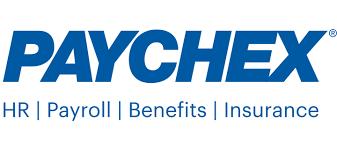

Designing better ways to work by providing cutting-edge products and exceptional experiences within HR, Talent, Time Management, Benefits and Payroll.
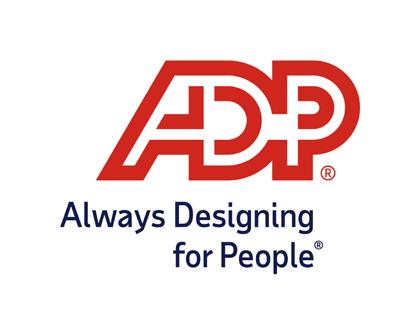
Providing best-in-class consulting, rigorous analytics, and datadriven insights that help organizations make factbased decisions.
Sage enables organizations to thrive in today's digital world with AI-powered financials, planning, analytics, and HR solutions.
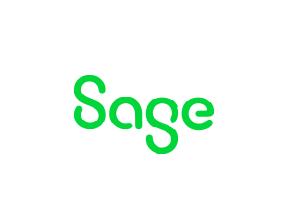
LEARN MORE LEARN MORE
LEARN MORE
MORE
MORE
LEARN
LEARN
PARTNER WITH US

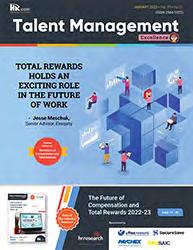









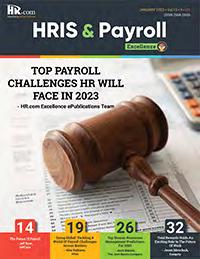
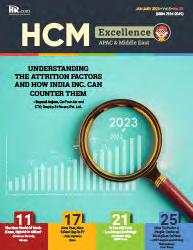
Like to submit an article? Use our online submission form or for more information go to www.hr.com/ExcellencePublications Publications 13 Targeted Publications to Reach Your Audience Informing, Educating, Enlightening and Assisting HR professionals in their personal and professional development, the Excellence series offers high-quality content through the publications!

For more information: Phone: 1.877.472.6648 | Email: ePubeditors@hr.com | www.HR.com/epubs HR Strategy & Planning Excellence June 2023



























 By Brett Farmiloe, Terkel.io
By Brett Farmiloe, Terkel.io
























































